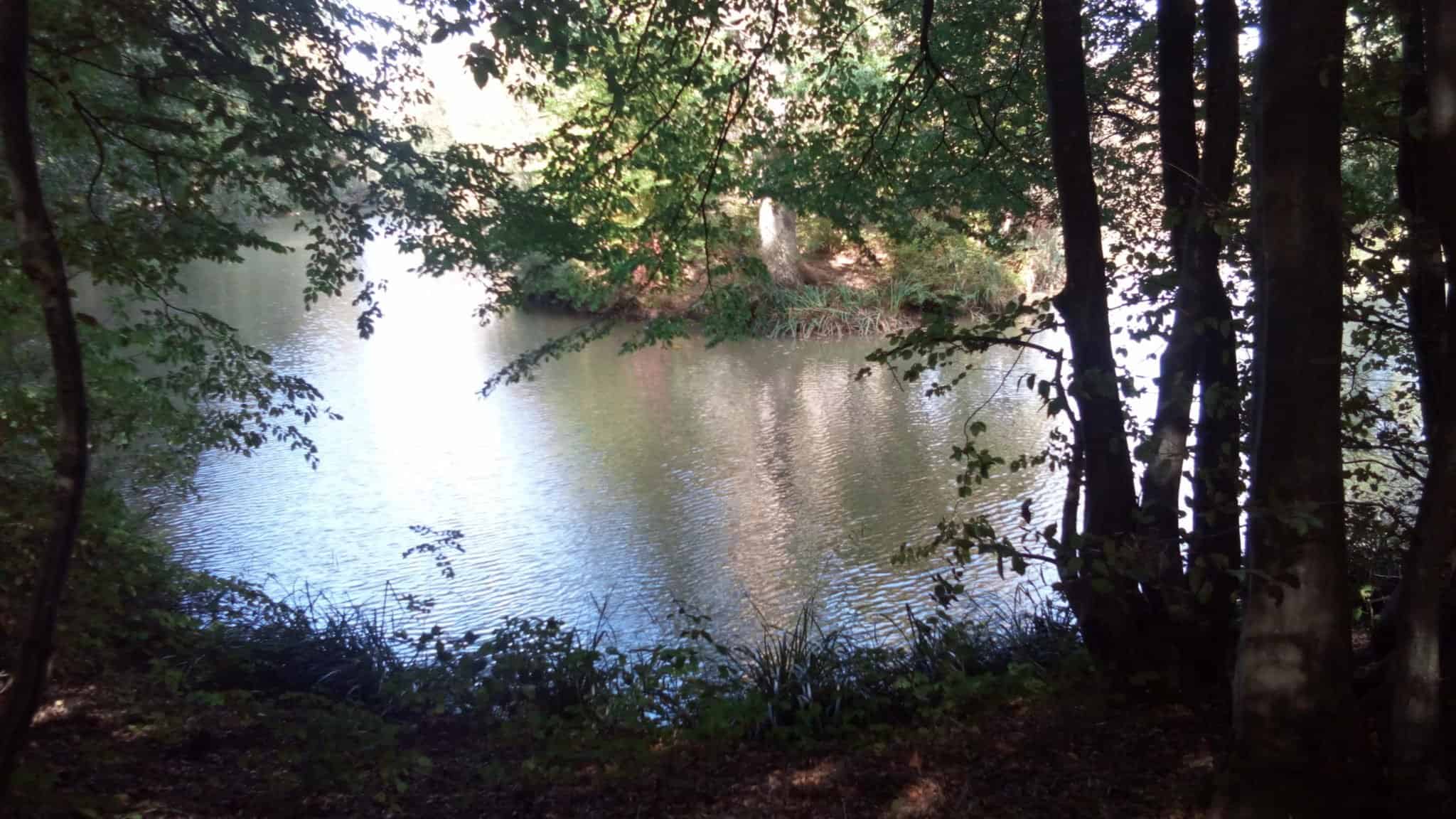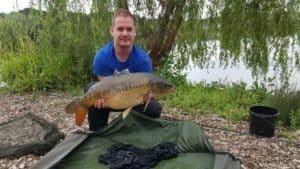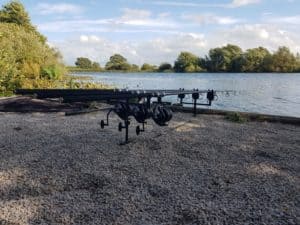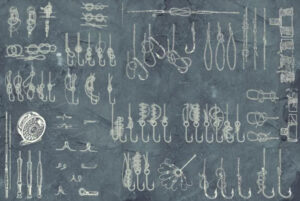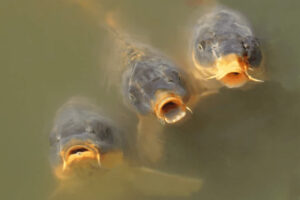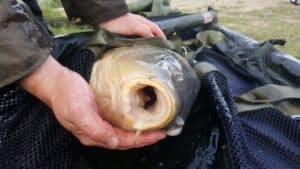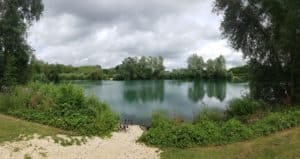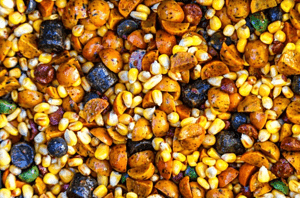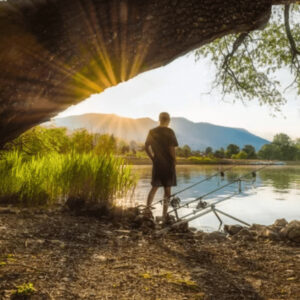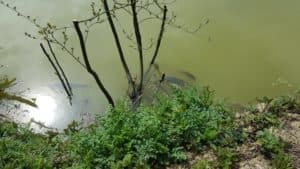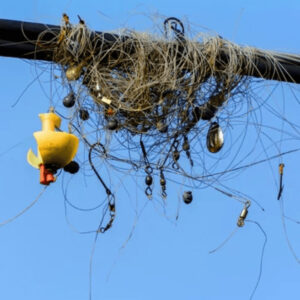For many anglers, catching a carp is one of the most rewarding experiences in fishing.
Although these large fish can be notoriously difficult to catch, with proper knowledge and technique there are ways to increase your chances for success.
Carp fishing requires patience, research, and an understanding of the behavior of these freshwater fish.
In this guide, we’ll cover the basics of carp fishing, from essential techniques and tips to choosing the right bait and spots.
With these helpful hints, you’ll be able to maximize your chances of landing a big catch!
Look for areas with lots of vegetation, including margins, overhanging trees, and tight to islands.
Any good angler knows that one of the best carp hotspots is along the margin.
This is where the water meets the land, and there is often an abundance of vegetation.
The vegetation provides cover for the fish and also attracts insects, which the fish feed on.
In addition, the margin is often shallow, making it easier to cast your line and get a bite.
Another good place to look for fish is beneath overhanging trees.
The tree roots provide shelter for the fish, and the leaves offer protection from the sun.
The tree also drops insects into the water, which the fish will feed on.
Finally, Another good place to find fish is around tight to islands.
The island provides a physical barrier that protects the fish from predators.
In addition, the island blocks out sunlight, making it cooler in the water and more attractive to fish.
Whether you’re margin fishing or tight-to-island fishing, keep an eye out for areas with lots of vegetation – it’s a surefire way to find some big catches.
Lily pads and reed beds are also good places to find carp.
Lily pads and reed beds are popular carp hotspots.
Carp are a type of freshwater fish that is common in many waterways around the world.
One of the reasons carp are often found in these habitats is that they feed on the insects and bugs that live on the vegetation.
In addition, carp also consume the roots and stems of aquatic plants.
As a result, carp play an important role in maintaining the balance of aquatic ecosystems.
If you can find a spot where there is little or no fishing pressure, you’re more likely to have success.
If you’ve ever been fishing, you know that one of the most important factors in whether or not you catch anything is where you choose to fish.
Fish are often wary of areas where there is a lot of human activity, and as a result, these areas can be more difficult to fish in.
On the other hand, if you can find a spot where there is little or no fishing pressure, the fish will be less likely to be afraid of you and more likely to bite.
So if you’re looking for a productive spot to fish, it’s worth taking the time to find an area where you’re less likely to be disturbed by other people.
Once you’ve found a good spot, use baits that carp like such as corn, bread, or worms.
Carp tend to congregate in areas with lots of vegetation, so look for a spot where there is thick grass or aquatic plants.
Once you’ve found a good spot, use baits that carp like such as corn, bread, or worms. It’s also important to feed little and often, as this will keep the carp coming back for more.
Finally, be quiet and make little disturbance when you’re fishing, as carp are easily scared away.
By following these tips, you’ll be well on your way to catching some carp of your own.
Use fishing watercraft skills to look for signs of fish
Watercraft knowledge is essential for successful fishing in any environment.
Knowing the weather patterns and how they affect carp behavior, as well as the reasons behind their actions, can greatly improve your chances of a successful catch.
In this section, we’ll be providing some helpful tips on where to find carp depending on certain conditions and what signs to look for.
With this information, you’ll be able to get the most out of your fishing trips.
Reeds Twitching:
Keep a lookout for any reeds that seem to be twitching. This could indicate the presence of carp, as they will swim in and out of them.
Bubbling:
If you see bubbling activity on the lake bed, this demonstrates feeding carp searching for food. This is a sure sign of their presence.
Clouded Water:
Cloudy water is another indication that carp are actively routing around in the lake bed. Do not ignore this clue.
Head and Shouldering:
Look out for fish appearing to be head and shouldering, with no sound accompanying them. This behavior is often a sign of a feeding carp, coming up to clean its gills out.
Water Birds Spooking:
Pay attention to the local birdlife, particularly in shallower water. If there are carp present, they will often spook or quickly change direction.
Rolling:
Keep an eye out for fish rolling at the surface before submerging again. While they may not be feeding, it will still give an indication of their whereabouts.
Be patient and keep trying – eventually, you’ll catch one of these big fish!
Fishing can be a frustrating activity – sometimes you can cast your line for hours without so much as a nibble.
It can be tempting to give up and go home empty-handed, but if you persevere you may just be rewarded with a trophy catch.
Large fish are notoriously elusive, but there are a few things you can do to increase your chances of landing one.
First, make sure you’re using the right bait for the type of fish you’re targeting.
Second, try fishing in areas where there is lots of food – large fish usually congregate where there is an abundance of smaller prey.
Finally, be patient and keep casting your line – eventually, your efforts will pay off!
Conclusion
Carp fishing can be a difficult and frustrating endeavor, but if you follow these tips you’ll have a much better chance of success.
First and foremost, look for areas with lots of vegetation as this is where carp like to congregate.
Lily pads and reed beds are especially good places to try.
If you can find a spot that isn’t being fished heavily by others, your odds of catching a carp go up significantly.
Baits such as corn, bread, or worms are effective in attracting these fish.
Finally, don’t get discouraged if you don’t catch anything on your first few tries – persistence is key when it comes to carp fishing.
FAQ
What bait is best for catching carp?
The most popular baits for carp fishing are corn, bread, and worms. These can be used alone or combined in a mix with other ingredients such as maggots or pellets. Experiment to see which works best for your local area.
Where should I go for carp fishing?
Look for areas with lots of vegetation such as lily pads, reeds, and weeds. These are all good places to try when searching for carp. In addition, be sure to check any shallow water or deep pools in the area. Carp tend to congregate in these spots during certain times of the year.
What are signs that carp are present?
Watch out for reeds twitching, bubbling activity on the lake bed, cloudy water, fish head and shouldering without sound, local water birds spooking or quickly changing direction, and rolling at the surface before submerging again. All of these are signs that carp may be present in the area.
What should I do if I am not catching any fish?
Be patient and keep trying – eventually you’ll catch one of these big fish! Keep an eye out for areas with lots of food, use the right bait for the type of fish you’re targeting, and don’t give up. With a bit of persistence and luck, you’ll be well on your way to landing your trophy catch!
Related Content
I have made a lot of mistakes during my fishing sessions and don’t want you to make the same mistakes. I’ve learned the hard way over 20 years of fishing most weekends, testing, tweaking, and testing again and now want to help you excel with your carp fishing.
If you need any help, you can reach me at Fishing Again’s Facebook page
Last Updated on February 5, 2024 by Shane

